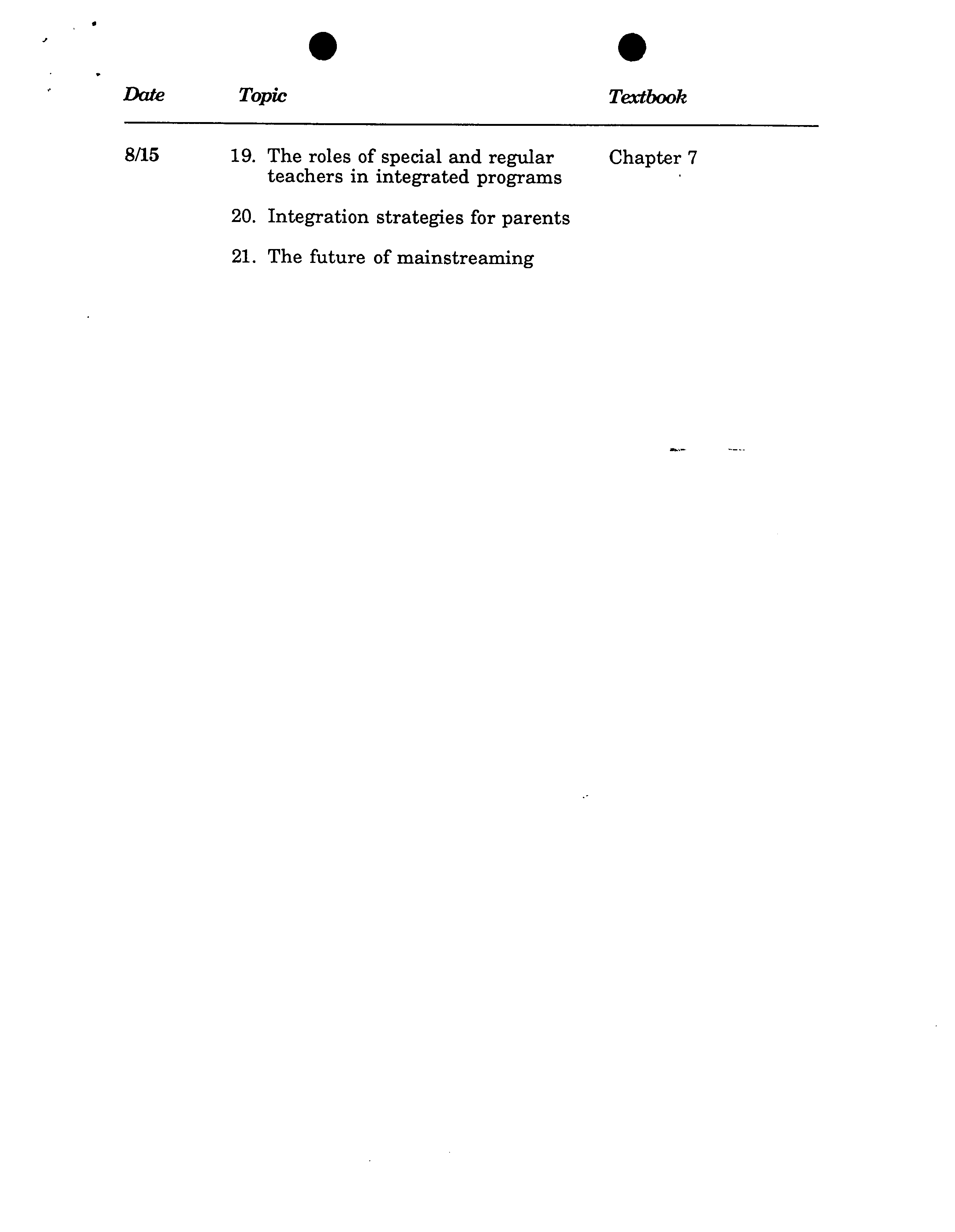S
?
S
SIMON FRASER UNIVERSITY
?
Education 379-3
?
The Exceptional Child in the Regular Classroom: Primary
Summer Session, 1990
?
Instructor: ?
Dr. Larry Larsen
MTWRFS
8:30-12:30
August 7-15,1990
Location: U. Vic (Begbie 157)
Prerequisite:
Certified Practicing Teacher
Course Description
The primary emphasis of this course is on practical strategies and
techniques for promoting the successful integration of primary level
pupils who have diverse special education needs into regular
education schools and classrooms. The students are also introduced
to a rationale for mainstreaming; administrative issues that
surround mainstreaming programs; basic principles of behavior
management and classroom organization; methods for promoting
social interaction between pupils who have disabilities and their non-
handicapped peers; the roles of special and regular education
teachers in mainstream programs; and integration strategies for
parents.
Required Texts:
Lewis, R.B., & Doorlag, D.H. (1987), Teaching Special Students in the
Mainstream (2nd Edition), Toronto: Merrill Publishing Company.
Additional readings will
be distributed in class.
Schedule:
Date ?
Topic ?
Textbook
8/7 ?
1. Overview of course content and
?
Chapters 1-3
requirements
2.
Characteristics and needs of
special students
3.
A rationale for educational
integration
S ?
.
Date
?
Topic ?
Textbook
8/8 ?
4.
Administrative issues in
mainstreaming
5.
The mainstreaming continuum:
Integration at the preschool and
secondary levels
6.
Mainstreaming in the context of
effective schools and effective
teaching: An overview of recent
research
8/9 ?
7.
Adapting instruction for special
Students: ?
Basic principles
8.
Managing classroom behavior
9.
Organizing and coordinating the
learning environment
8/10 ?
10.
Models for mainstreaming
11.
Integration Strategies I:
Learning disabilities
8/11 ?
12.
Integration strategies II:
Mental retardation
13.
Integration strategies III:
Behavior disorders
14.
Integration strategies IV:
Communication disorders
8/13 ?
15.
Integration strategies V:
Physical and health
impairments
16.
Integration strategies VI:
Vision and hearing impairments
8/14 ?
17.
Integration strategies VII:
Cultural differences
18.
Strategies for promoting social
interactions in integrated settings
Chapters 4,5 &7
Chapters 8 & 9
Chapters 10- 12
Chapters 13-14
Chapter 6
S
?
S
Date ?
Topic ?
Textbook
8/15
?
19. The roles of special and regular
?
Chapter 7
?
teachers in integrated programs
20.
Integration strategies for parents
21.
The future of mainstreaming



